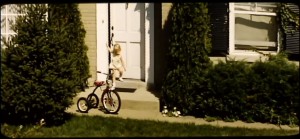
"Short wide screen amateur film made by George Ives, a Chicago Metro Movie Club member, and edited by Kenosha Cine Club member Ron Doerring. A corresponding 1/4" audio reel for this title is also housed at CFA, but has yet to be digitally transferred" Chicago Film Archives.
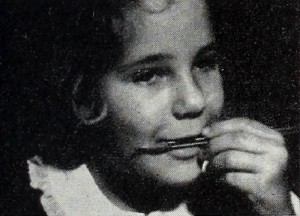
"Take a dozen or more normally exuberant youngsters in the second grade of school, mix them amid a day-long session of changing classes, and flavor with the excitement of making a movie — this was the recipe which Herbert F. Sturdy set himself to follow in cooking up Sweeter by the Dozen. He has been remarkably and quite charmingly successful. That the school was West Lake, in the svelte suburbs of Hollywood, and that the pupils were the progeny of "name" figures in the film colony, may have had, perhaps, something to do with it. But kids will be kids — whether in Glendale or Grand Rapids. By some alchemy of the camera, Mr. Sturdy has indeed made them sweeter by the dozen." Movie Makers, Dec. 1951, 412.
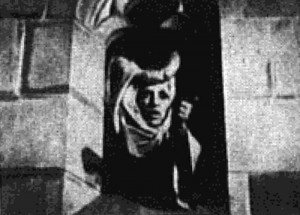
"Sweetheart Roland comes to us from Grimm's Fairy Tales and depicts a grandmother reading the story to a young child of perhaps three years while the latter imagines just what the tale would have been like in real life. This gives the producer sufficient latitude to act out the story with his characters much as the youngster might imagine it. Synched dialog of the actors with the narrator's voice is a clever innovation seldom seen on the amateur screen" PSA Journal, Sept. 1966, 34.
"All of the players in this picture were boys in a summer camp who upon discovering that one of their members has a movie camera decide to make a motion picture. Like all youth they decide to imitate and based their story on Tarzan. The producers of this worked up a splendid bit of comedy, interjected a fine piece of melodrama with an Alger Jr. finish that rounded it out into a production that many of the judges felt would have been worthy of showing in any theatre. The acting, direction, story and handling as a whole was considered equal to many a professional comedy." American Cinematographer, Dec. 1932, 7.
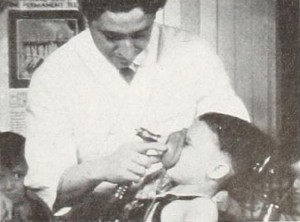
"Morton H. Read has made, in Teeth and Good Health, an effective study of the work accomplished by the Dental Clinic of the Public Schools of Springfield, Mass. This film should be of great interest to educators whose institutions offer a similar service to children of grade school age. The picture lucidly outlines the program followed by the teachers, nurses and doctors in the system set up by this school, to facilitate caring for the children's teeth. Charts and diagrams that warn the children of the danger of neglected teeth are shown, as well as excellent shots of the dentists at work. Thus, through familiarizing youngsters with the importance of dental care and its mechanics, the child is taught not to fear the dentist. A recalcitrant mother serves as a focal point for the detailed explanation of the advantages of the dental program in the school. The filming is marked by competent cinematography, logical sequence arrangement and simplification of detail." Movie Makers, Dec. 1942, 509-510.
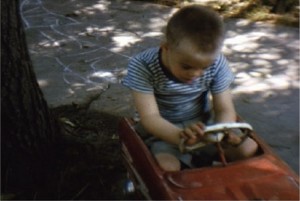
"“Think of Me First as a Person” is a short documentary about a boy with Down Syndrome. The footage was shot on 16mm in the 1960s by the boy’s father, Dwight Core, Sr. The filmmaker’s grandson, George Ingmire, completed the film forty years later. This film explores perceptions about Down Syndrome from multiple viewpoints: the boy, his sister and the father. The sincere tone and heartwarming narration by the father lends a remarkable poignancy to this film. The story that unfolds within this documentary is sure to shed light on both the struggles and blessings of raising a child with special needs." thinkofmefirstasaperson.com
"Color film of a family picnic and riding in a model T." Church History Library.
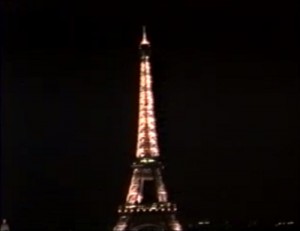
"In September 1992, Robbins Barstow and his wife Meg, of Wethersfield, Connecticut, USA, celebrated their 50th Wedding Anniversary by spending ten days visiting their son David and his family in Paris, France. Their two grandchildren, Geoffrey and Suzanna, showed them the sights of the city of lights, including the Eiffel Tower, Arc de Triomphe, Notre Dame Cathedral, Grand Opera House, and the Louvre." Archive.org
"Color film of the Turner children go a 'family' vacation. The children dressed as Ma, Pa, and child push a push cart to the Bryce Canyon National Park in Utah." Church History Library.
"The Home Movie award went to [Joseph] F. Hollywood for his 8mm picture 'Two Kids and a Pup.' The subject was truly home movie in nature. A brief continuity that showed the pup being brought home; both boy and girl wanted it and finally a compromise where it is agreed one day the boy is to hove the pup and the next day the girl; the children thus to alternate for peace's sake. Then is shown how the boy plays with a dog. He goes to a wooded lot, pretends to be hunting, etc. The girl, however, treats the dog the same as she would a doll. Makes clothes for it, dresses it up and places it in the doll buggy. Then comes the day when the girl decides to cheat a bit and rushes home to be the first to have the dog. When the boy arrives she has the dog completely covered in the doll buggy. However, at the crucial moment it rears its head and the fight is on. The mother then decides to settle the controversy by having the children stand at one end of the yard while she takes the dog to the other end. They are to call the dog and the one to whom the dog goes is to play with it that day. They are set, the dog is let loose and just at that moment another dog passes by and the pup rushes between the children after the other dog and thus the story ends. Hollywood's cutting and photography were good. And the handling of the whole picture was highly commendable." American Cinematographer, Jan. 1937, 25.
Total Pages: 15